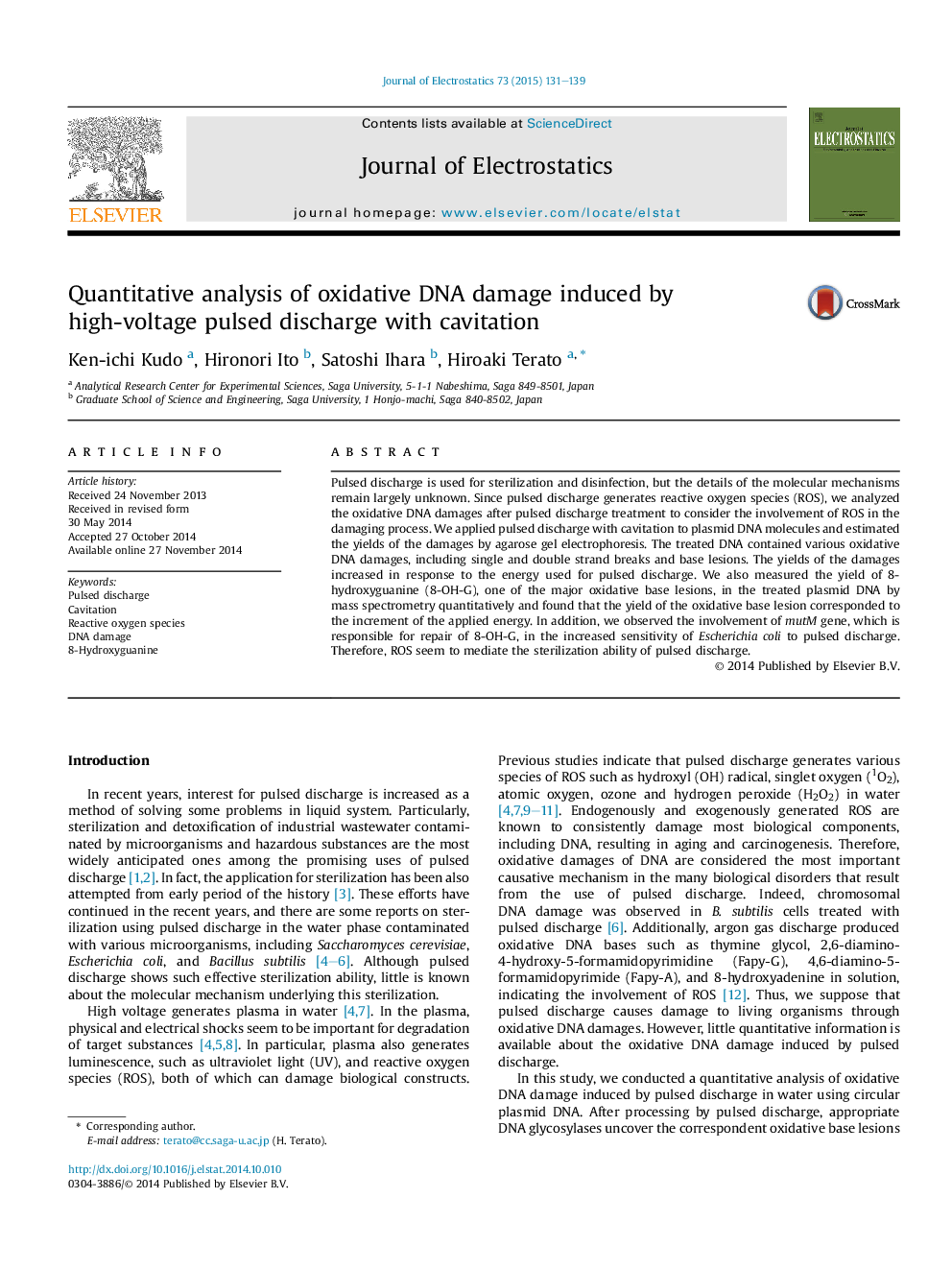| Article ID | Journal | Published Year | Pages | File Type |
|---|---|---|---|---|
| 726567 | Journal of Electrostatics | 2015 | 9 Pages |
Pulsed discharge is used for sterilization and disinfection, but the details of the molecular mechanisms remain largely unknown. Since pulsed discharge generates reactive oxygen species (ROS), we analyzed the oxidative DNA damages after pulsed discharge treatment to consider the involvement of ROS in the damaging process. We applied pulsed discharge with cavitation to plasmid DNA molecules and estimated the yields of the damages by agarose gel electrophoresis. The treated DNA contained various oxidative DNA damages, including single and double strand breaks and base lesions. The yields of the damages increased in response to the energy used for pulsed discharge. We also measured the yield of 8-hydroxyguanine (8-OH-G), one of the major oxidative base lesions, in the treated plasmid DNA by mass spectrometry quantitatively and found that the yield of the oxidative base lesion corresponded to the increment of the applied energy. In addition, we observed the involvement of mutM gene, which is responsible for repair of 8-OH-G, in the increased sensitivity of Escherichia coli to pulsed discharge. Therefore, ROS seem to mediate the sterilization ability of pulsed discharge.
